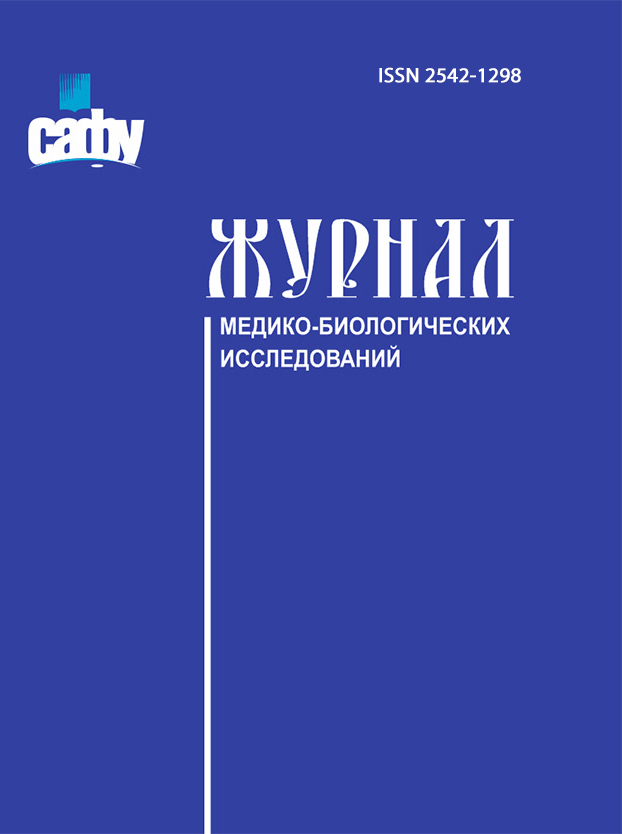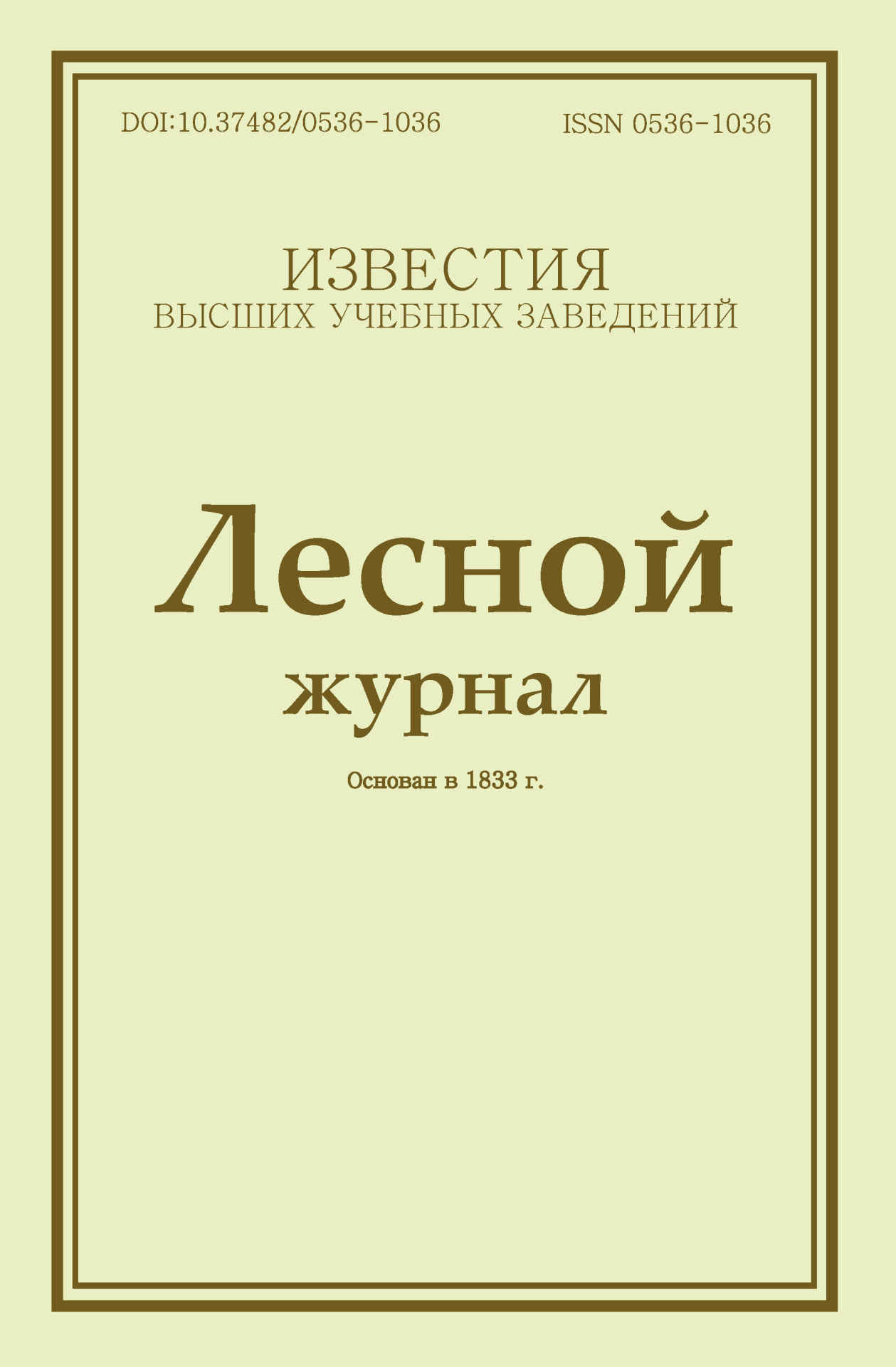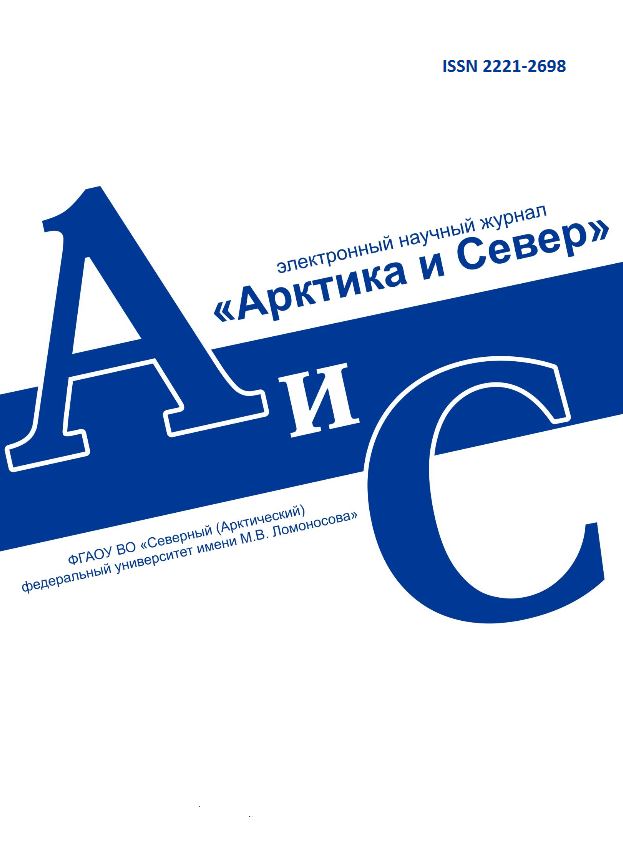
 

Legal and postal addresses of the founder and publisher: Northern (Arctic) Federal University named after M.V. Lomonosov, Naberezhnaya Severnoy Dviny, 17, Arkhangelsk, 163002, Russian Federation
Editorial office address: Vestnik of Northern (Arctic) Federal University. Series "Humanitarian and Social Sciences", 56 ul. Uritskogo, Arkhangelsk
Phone: (8182) 21-61-20, ext. 18-20
E-mail: vestnik_gum@narfu.ru
https://vestnikgum.ru/en/
|
The Transfinity of Culture and the Culture-Forming Features of Cyborgization. С. 98-113
|
 |
Section: Philosophy, Sociology, Politology
Download
(pdf, 0.5MB )
UDC
[130.2+141.1]:[004.5+004.8]
DOI
10.37482/2687-1505-V438
Authors
Vladimir S. Varakin
Cand. Sci. (Philos.), Assoc. Prof., Assoc. Prof. at the Department of Journalism, Advertising and Public Relations, Northern (Arctic) Federal University named after M.V. Lomonosov (address: nab. Severnoy Dviny 17, Arkhangelsk, 163002, Russia).
e-mail: s.varakin@narfu.ru, ORCID: https://orcid.org/0000-0003-2229-0283
Abstract
The article analyses, from the philosophical and mediological standpoint, the phenomenon of cyborgization as a total cultural form. In addition, the paper dwells on the theoretical approaches to understanding cyborgization and characterizes its current state and prospects. The author postulates that, in a general sense, cyborgization can be interpreted as a practice of merging humans with machines, devices and things. At the same time, it is argued that cyborgization most explicitly embodies such a feature of the cultural system as transfinity (overcoming the boundaries of human abilities and capabilities) and thereby actualizes the status of culture as an enhancement, i.e. strengthening or expansion. Asserting that transfinity is determined by such a feature of culture as mediality (ensuring continuity in preserving human acquisitions), the author emphasizes that cyborgization accompanies mediation, which is another total sociocultural phenomenon. In other words, cyborgization contributes to the continuous transmission of traditions of human technical and technological self-creation over time. The study raises the issue of the relationship between the ideas of a cyborg as a “partial android” and as a “techno-expanded” human. In addition, the concepts of posthuman and transhuman are expanded on; it is indicated that the most accurate concept is human technologizing, or technohuman. Further, the author describes 4 models of cyborgization: classical, neoclassical, pre-classical and non-classical. They are combined into two hypermodels – (post)modern and archaic – that demonstrate the presence of cyborgization proper and everyday androidization (human-thingness) in the cultural system. It is emphasized that the (post)modern hypermodel puts forward a conventionally moderate version of totality of cyborgization (totality of the past and the present), while the archaic hypermodel puts forward a radical version of totality (totality of the approaching future). In conclusion, the author notes that while the classical and neoclassical models of the symbiosis of humans and machines seem teratological, they constitute the vector of development of the cultural system.
Keywords
culture as an enhancement, transfinity, mediality, cyborgization, cyborg as a technohuman, cultural form, models of cyborgization, totality of cyborgization
References
- Debray R. Introduction à la médiologie. Paris, 2000. 223 p. (Russ. ed.: Debre R. Vvedenie v mediologiyu. Moscow, 2010. 368 p.).
- Varakin V.S. V nachale byli rubilo i kost’: istoki i istochniki mediakul’tury [In the Beginning Were the Chopper and the Bone: The Origins and Sources of Media Culture]. Chelysheva I.V. (ed.). Sovremennoe sostoyanie mediaobrazovaniya v Rossii v kontekste mirovykh tendentsiy [Current State of Media Education in Russia in the Context of Global Trends]. Rostov-on-Don, 2024, pp. 71–76. Available at: https://ifap.ru/library/book691.pdf (accessed: 17 March 2025).
- Bukatman S. Iskusstvennaya beskonechnost’. O spetseffektakh i vozvyshennom [The Artificial Infinity: On Special Effects and the Sublime]. Samutina N. (ed.). Fantasticheskoe kino. Epizod pervyy [Science Fiction Films. Episode One]. Moscow, 2006, pp. 233–256.
- Eagleton T. The Idea of Culture. Malten, 2000. 175 p. (Russ. ed.: Iglton T. Ideya kul’tury. Moscow, 2012. 192 p.).
- Podoroga V.A. Predislovie [Foreword]. Podoroga V.A., Paramonov A.A. (eds.). Posrednik. Massmedia, obshchestvo i kul’tura [Intermediary. Mass Media, Society and Culture]. Moscow, 2016, pp. 5–12.
- Pigalev A.I. Kul’tura kak bytie: istoki i granitsy paradigmy v kontekste dinamiki tsivilizatsiy [Culture as Being: Origins and Limits of the Paradigm in the Context of the Dynamics of Civilizations]. Sayko E.V. (ed.). Voskhozhdenie i slom. Strukturoobrazuyushchie faktory i sub”ekty tsivilizatsionnogo protsessa [Ascent and Breakdown. Structure-Forming Factors and Subjects of the Civilization Process]. Moscow, 2003, pp. 148–194.
- Burovskiy A.M. Posle cheloveka [After the Human]. Chesnokova T.Yu. Postchelovek. Ot neandertal’tsa do kiborga [The Posthuman. From Neanderthal to Cyborg]. Moscow, 2008, pp. 175–224.
- Epshteyn M. Pervoponyatiya: Klyuchi k kul’turnomu kodu [Primary Concepts: Keys to the Cultural Code]. Moscow, 2022. 720 p.
- Heidegger M. Veshch’ [The Thing]. Heidegger M. Vremya i bytie: stat’i i vystupleniya [Being and Time: Articles and Speeches]. Moscow, 1993, pp. 316–326.
- Shatunova T.M. Veshch’ v muzee (po motivam Khaydeggera) [The Thing in the Museum (Based on Heidegger)]. Observatoriya kul’tury, 2012, no. 5, pp. 22–27.
- Markoff J. Machines of Loving Grace: The Quest for Common Ground Between Humans and Robots. New York, 2015. 387 p. (Russ. ed.: Markoff D. Homo Roboticus? Lyudi i mashiny v poiskakh vzaimoponimaniya. Moscow, 2020. 536 p.).
- Barrat J. Our Final Invention: Artificial Intelligence and the End of the Human Era. New York, 2013. 322 p. (Russ. ed.: Barrat Dzh. Poslednee izobretenie chelovechestva: Iskusstvennyy intellekt i konets ery Homo sapiens. Moscow, 2019. 396 p.).
- Clynes M.E., Kline N.S. Cyborgs and Space. Astronautics, September 1960, pp. 26–27, 74–76.
- Licklider J.C.R. Man-Computer Symbiosis. IRE Trans. Hum. Factors Electronics, 1960, vol. 1, no. 1, pp. 4–11. https://doi.org/10.1109/THFE2.1960.4503259
- Penn M., Fineman M. Microtrends Squared: The New Small Forces Driving the Big Disruptions Today. Simon & Shuster, 2018. 432 p. (Russ. ed.: Penn M., Faynman M. Mikrotrendy, menyayushchie mir pryamo seychas. Moscow, 2019. 430 p.).
- Leonhard G. Technology vs. Humanity. Fast Future Publishing Ltd., 2016. 172 p. (Russ. ed.: Leongard G. Tekhnologii protiv cheloveka. Moscow, 2018. 320 p.).
- Hoffman S.S. The Five Forces That Change Everything: How Technology Is Shaping Our Future. Dallas, 2021. 298 p. (Russ. ed.: Khoffman S. Pyat’ sil, izmenyayushchikh vse. Kak tekhnologii formiruyut nashe budushchee. St. Petersburg, 2023. 480 p.).
- Kurzweil R. How to Create a Mind: The Secret of Human Thought Revealed. New York, 2012. 336 p. (Russ. ed.: Kurtsveyl R. Evolyutsiya razuma, ili Beskonechnye vozmozhnosti chelovecheskogo mozga, osnovannye na raspoznavanii obrazov. Moscow, 2018. 352 p.).
- Bostrom N. Superintelligence: Paths, Dangers, Strategies. Oxford, 2014. 328 p. (Russ. ed.: Bostrom N. Iskusstvennyy intellekt. Etapy. Ugrozy. Strategii. Moscow, 2016. 496 p.).
- Shumskiy S. Vospitanie mashin: Novaya istoriya razuma [Educating Machines: A New History of the Mind]. Moscow, 2021. 174 p.
- Kornfeldt T. Människan i provröret: Gentekniken som bygger om vårt innersta. Stockholm, 2000. 238 p. (Russ. ed.: Kornfel’t T. Neestestvennyy otbor: Gennaya inzheneriya i chelovek budushchego. Moscow, 2022. 244 p.).
- Schneider S. Artificial You: AI and the Future of Our Mind. Princeton, 2019. 192 p. (Russ. ed.: Shnayder S. Iskusstvennyy ty: mashinnyy intellekt i budushchee nashego razuma. Moscow, 2022. 246 p.).
- Rid T. Rise of the Machines: A Cybernetic History. New York, 2016. 414 p. (Russ. ed.: Rid T. Rozhdenie mashin: neizvestnaya istoriya kibernetiki. Moscow, 2019. 544 p.).
- Chereshnev E. Forma zhizni No 4: Kak ostat’sya chelovekom v epokhu rastsveta iskusstvennogo intellekta [Life Form Number 4: How to Stay a Human in the Age of Artificial Intelligence]. Moscow, 2022. 484 p.
- La Mettrie’s L’Homme Machine: A Study in the Origins of an Idea. Princeton, 1960. 264 p.
- Volkov A.V. Iskusstvennyy intellekt. Ot komp’yuterov k kiborgam [Artificial Intelligence: From Computers to Cyborgs]. Moscow, 2020. 256 p.
- Braidotti R. The Posthuman. Cambridge, 2013. 237 p. (Russ. ed.: Braydotti R. Postchelovek. Moscow, 2021. 408 p.).
- Murillo J.I. Does Post-Humanism Still Need Ethics? The Normativity of an Open Nature. Cuad. bioét., 2014, vol. 25, no. 85, pp. 469–479.
- Wittes B., Chong J. Our Cyborg Future: Law and Policy Implications. Center for Technology Innovation at Brookings, 2014. 28 p. Available at: https://www.brookings.edu/articles/our-cyborg-future-law-and-policy-implications/ (accessed: 17 March 2025).
- Jones H., Jones N. Race as Technology: From Posthuman Cyborg to Human Industry. Ilha Desterro, 2017, vol. 70, no. 2, pp. 39–51. http://dx.doi.org/10.5007/2175-8026.2017v70n2p39
- Gärtner K. Why Cyborgs Necessarily Feel. Technoetic Arts, 2022, vol. 20, no. 1, pp. 51–64. https://doi.org/10.1386/tear_00081_1
- Alekseeva I.Yu., Arshinov V.I., Chekletsov V.V. “Tekhnolyudi” protiv “postlyudey”: NBIKS-revolyutsiya i budushchee cheloveka [“Techno-People” Against “Post-People”: NBIKS-Revolution and the Future of Man]. Voprosy filosofii, 2013, no. 3. Available at: http://vphil.ru/index.php?option=com_content&task=view&id=717&Itemid=52 (accessed: 18 March 2025).
- Tulinov D. Pochemu kiborgizatsiya neizbezhna? [Why Cyborgization Is Inevitable?]. XX2 vek, 20 July 2015. Available at: https://22century.ru/popular-science-publications/cyborgization (accessed: 18 March 2024).
- Sokolova M.E. Cyborgization of Human: Social and Legal Dimensions. Soc. Nov. Soc. Sci., 2022, no. 4, pp. 52–64 (in Russ.).
- Nazarova Yu.V., Kashirin A.Yu. Existential Risks of Artificial Intelligence in the Context of the Axiology of Transhumanism (Based on the Works of N. Bostrom). Soc. Philos. Hist. Cult., 2023, no. 11, pp. 40–45 (in Russ.). https://doi.org/10.24158/fik.2023.11.5
- Warwick K. Creating Practical Cyborgs. Pragmat. Cogn., 2014, vol. 22, no. 1, pp. 159–181. https://doi.org/10.1075/pc.22.1.09war
- Warwick K. The Cyborg Revolution. NanoEthics, 2014, vol. 8, no. 3, pp. 263–273. https://doi.org/10.1007/s11569-014-0212-z
- Warwick K. Homo Technologicus: Threat or Opportunity. Philosophies, 2016, vol. 1, no. 3, pp. 199–208. https://doi.org/10.3390/philosophies1030199
- Warwick K. Superhuman Enhancements via Implants: Beyond the Human Mind. Philosophies, 2020, vol. 5, no. 3. Art. no. 14. https://doi.org/10.3390/philosophies5030014
- Martin E. Critical Analysis of Hypothetical Ideas About Posthumanity in Transhumanism and Posthumanism. Vestnik Severnogo (Arkticheskogo) federal’nogo universiteta. Ser.: Gumanitarnye i sotsial’nye nauki, 2024, vol. 24, no. 5, pp. 128–137. https://doi.org/10.37482/2687-1505-V381
- Varakin V.S. Kiborgizatsiya in toto: tekhnochelovek mezhdu podchineniem i pochinkoy [Cyborgization in toto: Technohuman Between Submission and Repair]. Astakhova T.N. (ed.). Aktual’nye voprosy gumanitarnykh nauk – 2024 [Current Issues in the Humanities – 2024]. Arkhangelsk, 2024, pp. 20–25. Available at: https://narfu.ru/upload/medialibrary/91c/Aktualnye-voprosy-gumanitarnyh-nauk-_-2024.pdf (accessed: 18 March 2025).
- Edinstvo mira i mnogoobrazie kul’tur (materialy “kruglogo stola” ukrainskikh i rossiyskikh filosofov) [Unity of the World and Diversity of Cultures (Materials of the “Round Table” of Ukrainian and Russian Philosophers)]. Voprosy filosofii, 2011, no. 9. Available at: http://vphil.ru/index.php?option=com_content&task=view&id=379&Itemid=52 (accessed: 18 March 2025).
- Luppicini R. The Emerging Field of Technoself Studies (TSS). Luppicini R. (ed.). Handbook of Research on Technoself: Identity in a Technological Society. Hershey, 2013, pp. 1–25. https://doi.org/10.4018/978-1-4666-2211-1.ch001
- Ciszek H., Matulewska A. A Case Study of the Productivity of the Prefix Cyber- in English and Greek Legal Languages. Stud. Log. Gramm. Rhetor., 2019, vol. 58, no. 1, pp. 35–57. https://doi.org/10.2478/slgr-2019-0016
- McLuhan M. Understanding Media: The Extensions of Man. New York, 1964. 359 p. (Russ. ed.: Maklyuen M. Ponimanie media: vneshnie rasshireniya cheloveka. Moscow, 2017. 464 p.).
- Khoruzhiy S.S. Vizual’nyy opyt i prostranstvennyy opyt v praktike isikhazma [Visual Experience and Spatial Experience in the Practice of Hesychasm]. Khoruzhiy S.S. (ed.). Fonar’ Diogena: proekt sinergiynoy antropologii v sovremennom gumanitarnom kontekste [Diogenes’ Lantern: A Project of Synergetic Anthropology in a Contemporary Humanitarian Context]. Moscow, 2010, pp. 387–431.
- Savchuk V.V. Mediafilosofiya. Pristup real’nosti [Media Philosophy. An Attack of Reality]. St. Petersburg, 2014. 350 p.
- Chernykh A.I. Ritualy i mify media [Rituals and Myths of the Media]. Moscow, 2015. 160 p.
- Emelin V.A. Kiborgizatsiya i invalidizatsiya tekhnologicheski rasshirennogo cheloveka [Cyborgization and Disability of Technologically Extended Human]. Natsional’nyy psikhologicheskiy zhurnal, 2013, no. 1, pp. 62–70.
- Scott-Morgan P. Peter 2.0: The Human Cyborg. London, 2021. 320 p. (Russ. ed.: Skott-Morgan P. V shage ot vechnosti: Kak ya stal kiborgom, chtoby pobedit’ smert’. Moscow, 2023. 360 p.).
|
Make a Submission











Journal of Medical and Biological
Research

Forest Journal

Arctic and North


|







